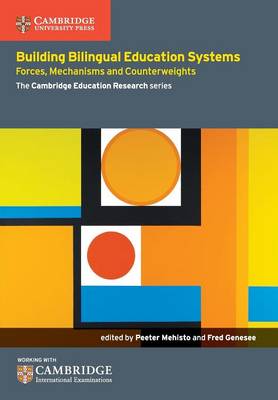Cambridge Education Research
1 total work
This book details investments required for establishing successful bi-/trilingual education programmes and discusses administrative, community legislative, political, societal and institutional complexities that shape bi-/trilingual education. It will help readers anticipate potential consequences of various programme development decisions and prepare them for both expected and unexpected outcomes. The complexities of bi-/trilingual education are organised using an innovative conceptual framework of forces, mechanisms and counterweights. This conceptual framework is used to analyse 13 case studies from five continents. In addition, six 'voices-from-the-field' provide the first-hand accounts of educational professionals working in bilingual programmes.
